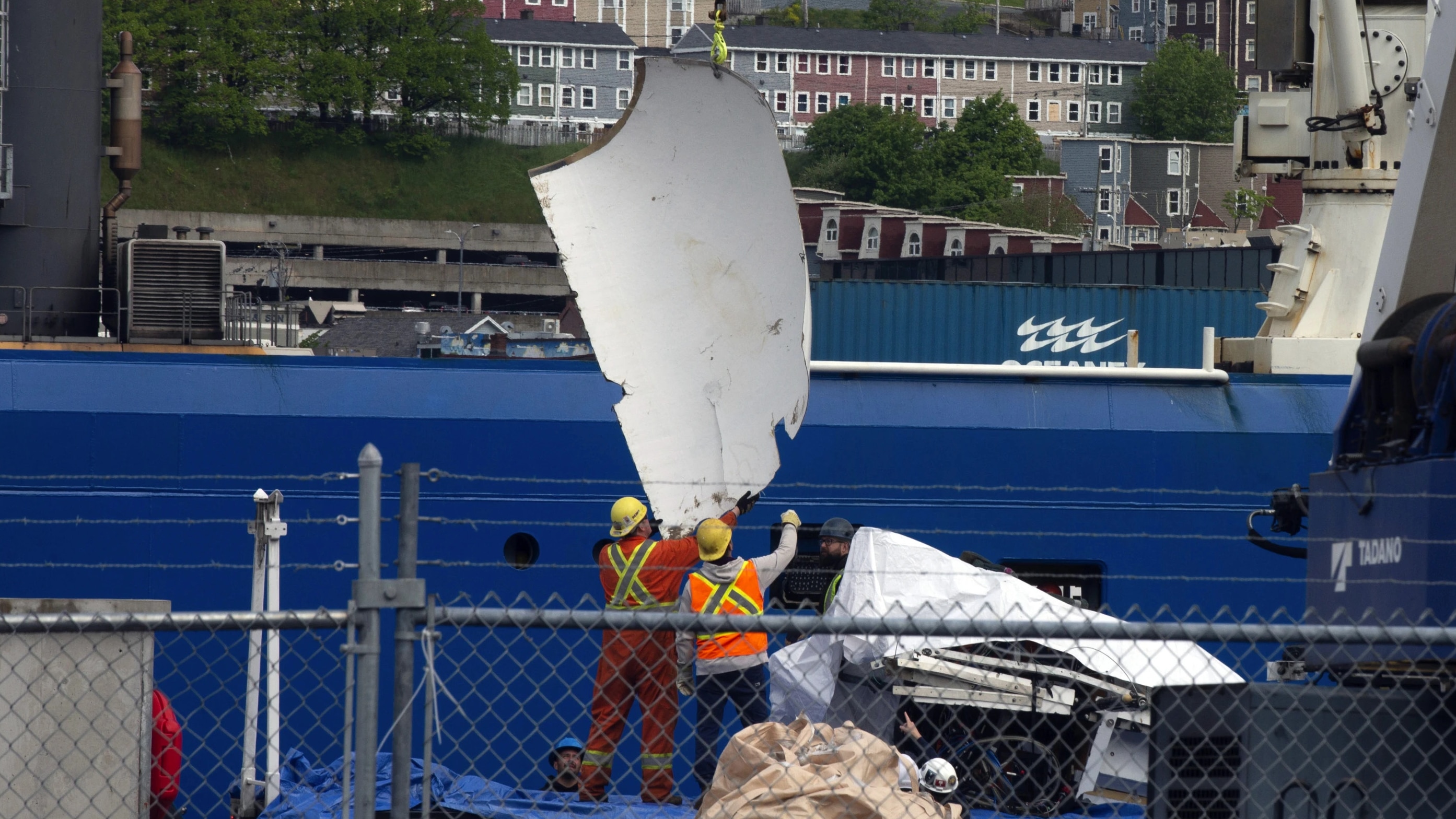Recovered Titanic submersible debris may have human remains, investigation underway

Horizon Arctic, a Canadian ship, spearheaded the recovery mission. (Photo: AP)
Human remains might have been found among the wreckage of the Titan submersible that imploded during an expedition to the Titanic wreckage site last week, said the US Coast Guard on June 28.
According to the BBC, five major pieces of debris, including one titanium end cap, Titan's porthole with its window missing, a titanium ring, and the landing frame of the submersible, were discovered approximately 3,800 metres (12,000 feet) below the surface of the sea in the North Atlantic and have been brought ashore to St John's, Newfoundland in Canada.
The investigation, led by the US Coast Guard, aims to uncover the reasons behind the catastrophic loss of the submersible, resulting in the death of all five individuals onboard.
Presumed human remains and debris from the Titan submersible, crushed to pieces in an undersea implosion that killed all five people aboard, were recovered from the ocean bottom and brought ashore to Canada, the US Coast Guard said https://t.co/zh28xdVnOU pic.twitter.com/vaNj9TpKWU
— Reuters (@Reuters) June 29, 2023
Coast Guard Chief Capt Jason Neubauer emphasised the importance of comprehending the factors leading to the incident to prevent similar tragedies in the future.
Scope of human remains
- The recovered "presumed human remains" will be sent to the United States for formal analysis by medical professionals.
- The Coast Guard has initiated an extensive inquiry, involving the Marine Board of Investigation and other US and Canadian government agencies.
- The evidence, including debris pieces, will be examined and tested at an American port.
- Authorities were originally unconvinced that any of the bodies could be recovered given the unforgiving situation at the wreck site.
- A press hearing will be scheduled in due course to present the detailed findings of the investigation, added the Captain.
"There is still a substantial amount of work to be done to understand the factors that led to the catastrophic loss of the Titan and help ensure a similar tragedy does not occur again," said Captain Neubauer.
Recovery process and debris analysis
- The wreckage of the Titan was found approximately 3,800 metres (12,500 feet) underwater, approximately 500 metres (1,600 feet) away from the Titanic on the ocean floor.
- The precise details of the debris recovery have not been disclosed, but various methods, such as using collection devices, remote-operated vehicles (ROVs), or heavy lifting equipment, could have been employed.
- Analysing the retrieved debris is crucial in determining the cause of the implosion.
- Carl Hartsfield, an expert from the Woods Hole Oceanographic Institution, who was also advising the Coast Guard team on the search mission highlighted the potential significance of the electronic data recorded by the submersible's instruments. He too, did not comment on the presence of human remains in the debris.
- The investigation will likely examine electronic data, structural failure points, material connections, and the possibility of recovering any salvageable electronics.
- The Transportation Safety Board of Canada has also sent the voyage data recorder of the Titan's mother ship, the Polar Prince, for analysis.
What does it mean for the submersible industry?
- The incident claimed the lives of five people: Stockton Rush, CEO of OceanGate Expeditions; Hamish Harding, a British billionaire; Paul-Henri Nargeolet, a retired French navy commander; and Shahzada Dawood, a British Pakistani businessperson, and his son, Suleman.
- The implosion of the Titan has raised concerns about the safety of private deep-sea exploration operations.
- The Coast Guard aims to use the investigation to enhance safety standards within the submersible industry.
Investigative efforts and future implications
"The evidence will provide critical insights into the cause of the implosion," stated Coast Guard Capt Jason Neubauer. The comprehensive investigation may recommend statutory changes and potential criminal charges to prevent similar incidents.
- "We are still on mission," said Jeff Mahoney, spokesperson for Pelagic Research Services, the owner of the ROV used in the debris recovery. Mahoney too declined to comment further on the details of the recovered wreckage.
- The investigation process could take several months, with officials planning to review all available information, including preliminary interviews, data from the Polar Prince (the Titan's mother ship), and the materials recovered from the wreckage, according to the Transportation Safety Board of Canada.
The collaboration between US and Canadian authorities, along with the involvement of international jurisdictions, emphasises the seriousness of the incident and the need for a thorough investigation to ensure the safety of future submersible expeditions.

